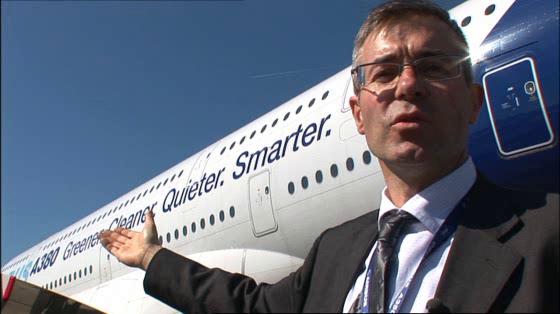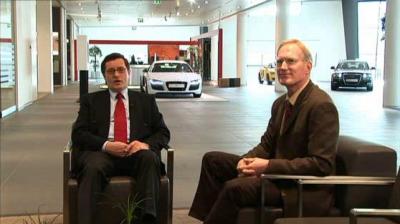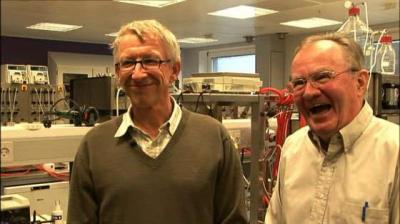Alain Porte, André Robert, Hervé Batard
Sound insulation for aeroplane engines
For years, inventions in the aerospace sector have focused largely on producing larger and faster aeroplanes, with the high noise levels of jet engines receiving little attention. That changed when Airbus inventors Alain Porte, André Robert, Hervé Batard developed a noise-absorbing inside layering for aeroplane engines which makes the A-380 super-jumbo by far the quietest long-range aircraft in the world.
Despite advances in technology, the take-off and landing of commercial airliners is still a noisy affair. In 1999, a team of engineers at European aeroplane manufacturer Airbus developed a new noise-insulating inside layer for aeroplane engines which provides much lower noise levels while also reducing the overall weight of the aircraft.
This cutting-edge noise reduction technology is now used in all of the company's next-generation jets, including the brand-new double-deck Airbus A-380. Thanks to the efforts of Alain Porte and his team, the A-380 is the quietest long-range aircraft currently in operation. According to an evaluation made public by the European Aviation Safety Agency in 2007, the A-380 generates at least 50 percent less noise than its nearest competitor. From a technical standpoint, the patent on zero-splice inlets gives Airbus a major edge over their competition. The market for nacelles is big business - worth about $2.8 billion a year.
The direct implications for air traffic are even more striking. Because major airports such as London and Paris impose the strictest noise regulations worldwide, with limited arrival and departure times, most regular planes can only operate at certain times of day. Due to its low noise levels, airplanes equipped with the new sound insulation technology can bypass these restrictions and keep moving passengers at times other models cannot.
Watch the film
How it works
Prior to the new principle aeroplane engines were lined with noise-resistant materials which consisted of two to three different sections. However, the effects of the miniscule gaps left between the individual lining sections resulted in a phenomenon known as "acoustic scattering": the old linings rattled. To address the problem, Porte, Robert and Batard pioneered a new material for nacelle linings that could cover the entire inside in just one piece. This was achieved through a perforated, heat-resistant fabric that offers great flexibility together with unmatched noise dampening.
At a glance
| Inventors | Alain Porte, André Robert, Hervé Batard (France) |
| Invention | Sound insulation for aeroplane engines |
| Sector | Air transport / Noise pollution |
| Company | Airbus (France) |
Contact
European Inventor Award and Young Inventors Prize queries:
european-inventor@epo.org Subscribe to the European Inventor Award newsletterMedia-related queries:
Contact our Press team#InventorAward #YoungInventors



